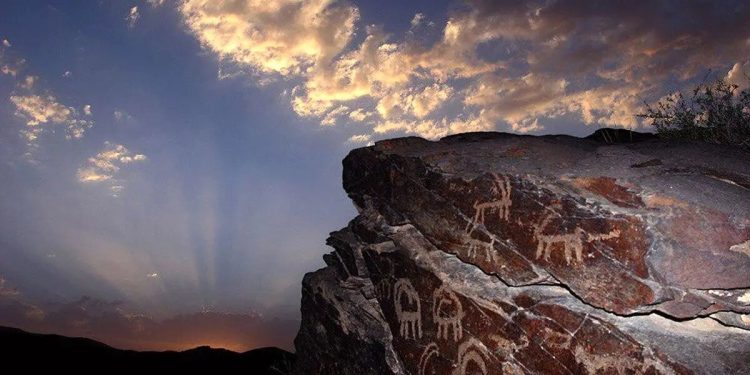The Teymareh Petroglyphs, one of the most extensive collections of rock art globally, are currently at significant risk due to ongoing mining activities in the region. Petroglyphs, or rock art, represent some of the earliest forms of artistic expression, reflecting the diverse cultures and civilizations that have created them throughout history. Among these, the Teymareh site in Iran holds particular importance. Petroglyphs, which are images etched or carved into stone, served as early forms of visual communication, aiding in memory recall and eventually evolving into symbolic pictographs and ideographs, the precursors to modern alphabets. These ancient carvings are not merely artistic expressions but also profound cultural symbols that offer insights into the complex societies and religions of the tribes that created them.
Teymareh, located in the heart of Iran, is a testament to the rich history of human existence and artistic expression. This ancient region in the city of Khomein is home to approximately 21,000 petroglyphs, making it one of the most significant repositories of prehistoric art. The petroglyphs are spread across 31 archaeological sites covering over 50 square kilometers, creating a unique open-air museum in the region. Among the oldest remains are the Qeydu and Mazayen petroglyphs. The Teymareh carvings depict a wide range of subjects, from realistic to abstract representations of plants and animals. Commonly portrayed animals include goats with large, pointed horns, felines, canids, horses, and birds such as partridges and storks. The carvings also feature images of wheat, pine, and cedar, as well as scenes depicting martial arts, magic dances, pregnant women, and camel caravans.
Despite their estimated age of up to 40,000 years, the Teymareh petroglyphs remain largely unprotected and have been neglected by authorities. This vast and invaluable collection of prehistoric art has yet to receive the recognition and preservation efforts it deserves. According to reports, no national foundation has been established to safeguard this cultural heritage, leaving the petroglyphs vulnerable to damage and destruction. The Teymareh site went largely unnoticed for many years until the early 1990s, when Dr. Morteza Farhadi introduced it to the broader public through his book, Museums in the Wind. Since then, scholars have gradually begun to explore and document the site, but significant recognition and conservation efforts remain lacking.
Rasoul Majidi, the director of the Teymareh Friends Association and a leading researcher on Teymareh petroglyphs, has been instrumental in raising awareness about the site’s importance. He recalls how Teymareh was virtually unknown until a few decades ago, and how a visit from four Italian scholars in 2005 highlighted the site’s significance. These scholars, after seeing the extensive rock carvings, urged for the preservation of this invaluable heritage. However, despite growing awareness, Teymareh faces a new and pressing threat: mining activities. Majidi notes that five major mining operations are currently active in the area, extracting silica for the glass and steel industries. While persistent advocacy has managed to halt three of these operations, two mines continue to operate, posing a severe threat to the petroglyphs.
Majidi emphasizes that all conservation efforts for Teymareh have been led by non-governmental organizations and the local community. Despite their efforts, national heritage authorities have only registered three regions in Teymareh as national heritage sites, with no substantial protective measures in place. He also contrasts the situation in Iran with that of Saudi Arabia, where the government has invested heavily in protecting and promoting its rock art sites. In Iran, despite the thousands of rock canvases, there is a stark lack of strategic planning for their preservation and introduction to the world. Majidi stresses the urgent need for a dedicated national body to oversee the preservation of Teymareh’s petroglyphs. Despite the interest of archaeologists who recognize the site’s potential, tangible conservation efforts remain insufficient. “We have not seen any foreign tourists in three years,” Majidi laments. “While archaeologists who visit Teymareh acknowledge its uniqueness and potential, these insights remain merely observational and do not translate into action.”











